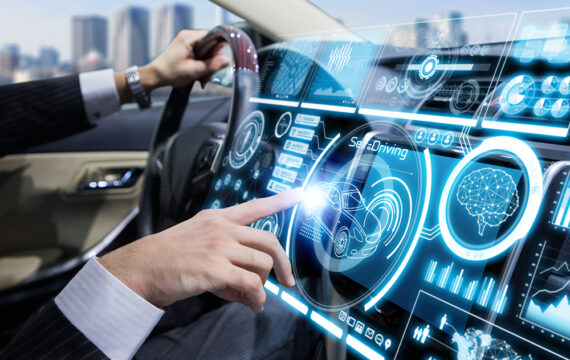Intro
In today’s rapidly advancing technological landscape, the automotive industry is undergoing a major transformation with the introduction of Advanced Driver Assistance Systems (ADAS). ADAS software development is at the forefront of this transformation, revolutionizing the way we drive and making our roads safer for everyone. As more vehicles incorporate ADAS technologies, the future of driving is evolving before our eyes.
Understanding ADAS and Its Importance in Modern Vehicles
ADAS stands for Advanced Driver Assistance Systems, a suite of technological innovations aimed at bolstering vehicular safety and supporting the driver’s decision-making process. These systems leverage an intricate network of sensors, cameras, and software algorithms to continuously monitor the vehicle’s environment, offering critical insights and automated interventions when necessary. Functions such as adaptive cruise control, pedestrian detection, and automatic parking are just the tip of the iceberg when it comes to ADAS capabilities.
The significance of integrating ADAS into contemporary vehicles extends beyond mere convenience. It represents a monumental shift towards minimizing road accidents, enhancing traffic flow, and optimizing overall driving conditions. By alerting drivers to potential hazards, assisting in maintaining safe following distances, and even taking preemptive action in imminent collision scenarios, ADAS technologies contribute significantly to the reduction of human error on the roads. This not only has the potential to save lives but also to decrease the financial and emotional burden of traffic incidents on society.
Moreover, as we navigate through this era of technological innovation, ADAS features are becoming more than just premium add-ons; they are evolving into standard expectations for modern vehicles. This transition underlines the growing recognition of the pivotal role that such systems play in shaping the future of mobility. As developers and manufacturers continue to refine and expand these technologies, ADAS is setting the stage for a new era of driving where safety and efficiency are paramount.
Key Technologies Powering ADAS Software
At the heart of ADAS software development lies a sophisticated array of technologies that enable vehicles to interpret their surroundings and make split-second decisions. These foundational technologies include, but are not limited to, radar sensors, LiDAR systems, and computer vision algorithms, each playing a unique role in the functionality of ADAS features. Radar sensors provide critical distance and speed data of objects surrounding the vehicle, facilitating features like adaptive cruise control and collision avoidance. In parallel, LiDAR systems contribute to the vehicle’s understanding of its environment by emitting laser pulses to generate comprehensive 3D maps, offering unparalleled precision in object detection and navigation.
Computer vision algorithms stand out by processing visual data from cameras, identifying everything from road signs to pedestrians, and making this information actionable. This capability is vital for functions such as lane departure warnings and automatic emergency braking. Beyond these, the burgeoning fields of machine learning and artificial intelligence (AI) significantly boost the ADAS software’s ability to learn from and adapt to diverse driving conditions. These technologies allow for the continuous improvement of system accuracy and reliability, enabling more complex and nuanced decision-making processes.
The synergy of these technologies ensures that ADAS software remains at the cutting edge of automotive safety and innovation, offering drivers an increasingly autonomous and secure driving experience. With each technological breakthrough, ADAS software becomes more adept at navigating the complexities of the road, marking significant strides toward a future where vehicles not only understand their environment but can anticipate and react to potential hazards with unprecedented precision.
The Role of Artificial Intelligence in Advancing ADAS
Artificial Intelligence (AI) has become a game-changer in enhancing the capabilities of Advanced Driver Assistance Systems (ADAS), propelling vehicles into a new realm of autonomous operation and decision-making. Through the utilization of machine learning algorithms, ADAS can sift through and analyze mountains of data generated from vehicular sensors, learning to identify patterns, behaviors, and potential threats with increasing accuracy. This enables a more dynamic and responsive system that can adapt to the complexities of real-world driving conditions more efficiently than ever before.
Deep learning, a subset of AI, further elevates the performance of ADAS by refining the interpretation of sensor data, making these systems not only more reliable but also incredibly adept at understanding nuanced scenarios on the road. Such advancements in AI technologies are critical in facilitating the development of systems that can predict and mitigate risks, navigate diverse environments, and execute split-second decisions to ensure passenger safety.
Moreover, the fusion of AI with ADAS is laying the groundwork for the next leap in mobility—fully autonomous driving. By leveraging Autonomous Driving Software Development Tools imbued with AI, vehicles are on the path to achieving unprecedented levels of self-sufficiency, capable of interpreting traffic conditions, obeying road signs, and even interacting with other vehicles in real-time. This collaboration between AI and ADAS is not just transforming the way we think about driving but is also establishing the foundation for a future where road safety and efficiency are significantly enhanced through technological innovation.
The Future of Driving: What Next for ADAS Development?
The horizon for ADAS development is brimming with potential, promising a transformative impact on global mobility. We stand on the cusp of integrating cutting-edge technologies such as augmented reality (AR) for enhanced navigational aids and Internet of Things (IoT) connectivity for seamless vehicle-to-vehicle and vehicle-to-infrastructure communication. These innovations aim to further refine the precision of ADAS functionalities, offering drivers an unprecedented level of assistance and situational awareness. Additionally, the incorporation of 5G technology is anticipated to revolutionize data transmission speeds, allowing for real-time processing of vast amounts of sensor data, thereby significantly improving response times and reliability of ADAS features. As we move forward, the focus will also shift towards standardizing ADAS technologies across the automotive industry, ensuring universal access to safety and efficiency benefits. This next phase of ADAS development is not just about enhancing existing systems but reimagining the very essence of vehicular travel, paving the way for a future where driving is not only safer and more efficient but also more connected and intuitive than ever before.



